See also
This section needs additional citations for verification .(March 2024) |
Aircraft of comparable role, configuration, and era
| Supermarine Type 224 | |
|---|---|
| General information | |
| Other name(s) | Spitfire (not officially adopted) |
| Type | Fighter aircraft |
| National origin | United Kingdom |
| Manufacturer | Supermarine |
| Designer | Team led by R. J. Mitchell |
| Management | Royal Air Force |
| Number built | 1 |
| History | |
| First flight | 19 February 1934 |
| Fate | Destroyed in 1937 (target practice) |
The Supermarine Type 224 was a British gull-wing monoplane fighter aircraft designed by R.J. Mitchell at Supermarine in response to Air Ministry Specification F.7/30, which sought to introduce a new fighter to succeed the Gloster Gauntlet. The Type 224 was powered by a Rolls-Royce Goshawk engine, which used an experimental evaporative cooling system.
Problems with the cooling system, combined with its disappointing performance during trials, led to the Type 224 being rejected by the Air Ministry, a contract for production aircraft eventually going to the Gloster Gladiator. The type is nevertheless notable because Mitchell learnt lessons from its design that were to contribute to his success with the Supermarine Spitfire.
Air Ministry Specification F.7/30, which developed from O.R.1, [1] was formally issued to the British aircraft industry in October 1931, [2] called for an all-metal day and night fighter aircraft armed with four machine guns, a high maximum speed and rate of climb, and a landing speed of less than 60 miles per hour (97 km/h). The importance of good visibility from the cockpit was specified. Although the use of any suitable engine was permitted, the Air Ministry expressed a preference for the Rolls-Royce Goshawk, then still being developed. [3] [note 1] Designs tendered to the specification came from Bristol, Hawker, Westland, Blackburn and Supermarine
Of the proposals submitted by British aircraft manufacturers, three were officially selected to produce prototypes for the Air MInistry, Supermarine (the Type 224), Blackburn (Blackburn F.3), and Westland (Westland F.7/30). [2] Hawker had both its biplane and monoplane designs rejected but built the Hawker P.V.3, as a private venture, similarly Bristol had three rejected and built both the Bristol Type 123 biplane and Bristol Type 133 (a monoplane) with its own money. Gloster had not tendered a submission as they were engaged on the Gloster Gauntlet, but later built their private venture Gloster SS.37 using Hawker construction techniques to improve their Gauntlet design.
As a result of the success of Supermarine during the Schneider Trophy contests, Supermarine's chief designer R. J. Mitchell was confident that he could design a highspeed fighter. Less than four months after receiving the specification, Supermarine tendered a monoplane design, the Type 224. [5]
Mitchell's design for the Type 224 included an inverted gull-wing, [6] chosen in order to shorten the undercarriage legs and so reduce drag.[ citation needed ] He chose a thick airfoil for the wing, in contrast to the type of airfoil for the Schneider Trophy racers. [7]
The fixed landing gear were encased in large fairings. [7] The fuselage was of monocoque construction, with one pair of guns mounted either side of the cockpit and the other pair in the 'trouser' fairings of the undercarriage, which was fixed.[ citation needed ]
The wing had a single main spar. The engine cooling system's condensers formed the wing's entire leading edge, [8] the combination of the two producing a 'D-box' spar that had a high torsional stiffness. Behind the main spar the wing was fabric-covered.[ citation needed ]
The Type 224 was powered by the 600 horsepower (450 kW) Goshawk II. The evaporative cooling system used by the Goshawk involved allowing the cooling water to reach a temperature greater than 100 °C (212 °F) without boiling by keeping it under pressure while circulating through the engine: this superheated water was then allowed to boil off by releasing the pressure, the resulting steam then being cooled in a condenser, collected as water and then recirculated through the engine. The system had been experimentally flown in other aircraft, but these were all biplanes, and the condensers and collector tank for the condensed water were all mounted in the upper wing. In the Type 224 the collector tanks were in the undercarriage fairings, and, as the condensed water was nearly at boiling point, it was liable to turn to steam under any slight change of pressure; this frequently occurred in the water pumps and would cause them to stop working. [9]
Mitchell was not a proponent of the use of wind tunnel tests, but the Vickers wind tunnel was used to test aspects of the design of the Type 224, and the results obtained indicated the superiority of a gull-wing design. [7] Wind-tunnel tests were carried out on a full-size model of the open cockpit area to ensure that the pilot would not be subjected to undue buffeting due to the design of the windscreen. [10]
Supermarine submitted information on the predicted performance of the Type 224 to the Air Ministry based on the wind-tunnel data, which suggested that the aircraft would perform well, and in response, the ministry issued a production contact for a prototype. [11] The Type 224 first flew on 19 February 1934, piloted by "Mutt" Summers. [10] Its performance was disappointing—the maximum speed was 228 miles per hour (367 km/h) and it took 9.5 minutes to climb to 15,000 ft (4,600 m), well below the predicted performance of a 245 miles per hour (394 km/h) speed and climb to 15,000 ft (4,600 m) in 6.6 minutes. [12] The wing design created issues with lateral stability, and further wind-tunnel tests were carried out before the design was finalised, when Mitchell enlarged the fin. [10]
Mitchell was in discussions about a number of improvements to the Type 224—a new wing, tailplane, and engine arrangements—which would give it a top speed of 265 miles per hour (426 km/h), but the Air Ministry decided that a new aircraft, rather than a modification of the Type 224, was called for. In 1933. [6] In January 1935, further construction was cancelled. Mitchell was disappointed in the Type 224’s under-performance, and came to doubt the reliability of the data produced by wind-tunnel tests. [11]
Gloster's private venture was ordered in mid-1935 as the Gladiator to equip the expanding RAF.
On 25 May 1937 the aircraft was transferred to the Aeroplane and Armament Experimental Establishment at RAF Martlesham Heath. [13] It ended its career during the summer of 1937, when it was used as for target practice at Orford Ness, Suffolk. [14]
The failure of the Type 224, coming soon after the Schneider racer successes, did not cause Mitchell to lose faith in his ability to design a fighter. He completely redesigned the type, producing a new design with straight wings and a thinner airfoil shape. [15]
The Air Ministry quickly realized that Mitchell’s new design was a new airplane. It wanted a fighter designed by Mitchell and his team, and in January 1935 it issued Specification F.37/34, for the sole purpose of covering a new design by Supermarine. [16] The specification, essentially an addendum to specification F.7/30 mentioning Supermarines specification 425a and drawing, [17] led on to the design of the Supermarine Spitfire. [18]
Supermarine had asked the Air Ministry for the name Spitfire to be reserved for the type. [6] The name was adopted, but Mitchell disliked it, and the use of it for the Type 224 was later dropped. [10]
Data fromSupermarine Aircraft since 1914. [19]
General characteristics
Performance
Armament
This section needs additional citations for verification .(March 2024) |
Aircraft of comparable role, configuration, and era
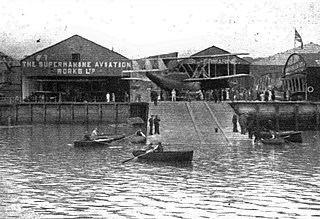
Supermarine was a British aircraft manufacturer. It is most famous for producing the Spitfire fighter plane during World War II. It also built a range of seaplanes and flying boats, winning the Schneider Trophy for seaplanes with three wins in a row in 1927, 1929 and 1931. After the war, the company produced a series of jet fighters.

Reginald Joseph Mitchell was a British aircraft designer who worked for the Southampton aviation company Supermarine from 1916 until 1936. He is best known for designing racing seaplanes such as the Supermarine S.6B, and for leading the team that designed the Supermarine Spitfire.

The Westland Whirlwind was a British twin-engined fighter developed by Westland Aircraft. A contemporary of the Supermarine Spitfire and Hawker Hurricane, it was the first single-seat, twin-engined, cannon-armed fighter of the Royal Air Force.

The Bristol Mercury is a British nine-cylinder, air-cooled, single-row, piston radial engine. Designed by Roy Fedden of the Bristol Aeroplane Company it was used to power both civil and military aircraft of the 1930s and 1940s. Developed from the earlier Jupiter engine, later variants could produce 800 horsepower (600 kW) from its capacity of 1,500 cubic inches by use of a geared supercharger.

The Supermarine Spiteful was a British fighter aircraft designed by Supermarine during the Second World War as a successor to the Spitfire. Powered by a Rolls-Royce Griffon engine, it had a radical new wing design to allow safe operations at higher speeds and incorporating inwards-retracting undercarriage. Other changes included a larger fin to improve the marginal stability of Griffon Spitfires. Development of the wing was formalised by Air Ministry specification F.1/43; as well as a new aircraft, there was an expectation the wing could be used as a replacement for the elliptical wing on Spitfire production.

The Hawker Tornado was a British single-seat fighter aircraft design of the Second World War for the Royal Air Force as a replacement for the Hawker Hurricane. The planned production of Tornados was cancelled after the engine it was designed to use, the Rolls-Royce Vulture, proved unreliable in service. A parallel airframe that used the Napier Sabre engine continued into production as the Hawker Typhoon.
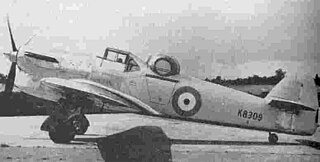
The Hawker Hotspur was a fighter aircraft used principally by the Royal Air Force. It was designed in response to Air Ministry Specification F.9/35, which required a powered turret as the main armament to replace the Hawker Demon. It was developed from the Hawker Henley, which was redesigned to take a Boulton-Paul semi-powered four gun turret.
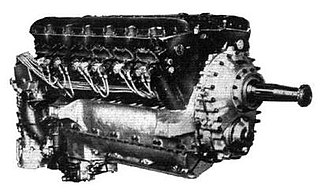
The Rolls-Royce Goshawk was a development of the Rolls-Royce Kestrel that used evaporative or steam cooling. In line with Rolls-Royce convention of naming piston engines after birds of prey, it was named after the goshawk.

The Supermarine S.6B is a British racing seaplane developed by R.J. Mitchell for the Supermarine company to take part in the Schneider Trophy competition of 1931. The S.6B marked the culmination of Mitchell's quest to "perfect the design of the racing seaplane" and represented the cutting edge of aerodynamic technology for the era.
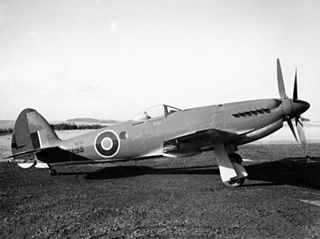
The Supermarine Seafang was a British Rolls-Royce Griffon–engined fighter aircraft designed by Supermarine to Air Ministry specification N.5/45 for naval use. It was based on the Spiteful, which was a development of Supermarine's Griffon-engined Spitfire aircraft. By that time the Spitfire was a 10-year-old design in a period of rapid technical development in aviation. The Seafang was outmoded by jet aircraft, and only 18 were built.

The Gloster Gauntlet was a single-seat biplane fighter designed and produced by the British aeroplane manufacturer Gloster Aircraft in the 1930s. It was the last fighter to be operated by the Royal Air Force (RAF) to have an open cockpit, and also the penultimate biplane fighter in its service.

The Gloster F.5/34 was a British fighter of the 1930s. It was a single-seat, single-engine monoplane of all-metal cantilever construction; the undercarriage was of the tailwheel type with retractable main wheels.
The Hawker P.V.3 was a British single-engined biplane fighter prototype of the 1930s. Only a single example was built, the Gloster Gladiator being selected instead to fulfill the requirement to which it was designed.

The Gloster SS.35 Gnatsnapper was a British naval biplane fighter design of the late 1920s. Two prototypes were built but the type did not enter production.

The Bristol Type 123 was a single-seat, single-engine biplane fighter built to a United Kingdom Air Ministry specification for a four-gun fighter in the early 1930s. Only one was built.
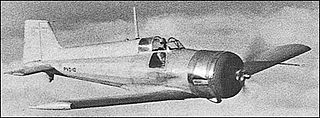
The Vickers Type 279 Venom was a British low-wing monoplane single-seat, single-engined, eight-gun fighter aircraft. It was fast and manoeuvrable but its Bristol Aquila radial engine was underpowered. Together with other designs built to the same specification, which included the Bristol Type 146, Gloster F.5/34, and Martin-Baker MB 2, it was rejected by the Air Ministry and only one Venom was built.

The Westland F.7/30 was a British fighter prototype. A single prototype was built in 1934, but the type was not put in production because its performance fell far below the RAF's requirements. The Gloster Gladiator won the F.7/30 competition.
The Blackburn F3 was a British single-engined fighter aircraft produced in response to Air Ministry Specification F.7/30.
The Supermarine Type 324 and Type 325 were British two-engined fighter designs proposed as the replacement for the Supermarine Spitfire and Hawker Hurricane. Neither of them nor a revised design - the Type 327 - to carry cannon was accepted for development and production.